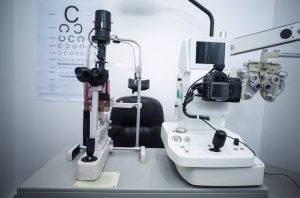All Categories
Featured
Table of Contents

Regular eye examinations are essential for maintaining good vision and detecting potential eye health and wellness concerns early. The frequency of these tests can differ considerably based on a person's age, lifestyle, and general wellness. Recognizing the advised schedule for eye tests can help guarantee that individuals of any ages obtain suitable treatment and monitoring for their eye health and wellness.
Infants and Toddlers (0-2 Years)
For babies and kids, eye tests are critical for discovering any kind of possible vision troubles beforehand. The American Academy of Ophthalmology suggests that a child's very first eye test need to happen at around 6 months old. Throughout this preliminary visit, the eye care specialist will assess the kid's visual development and check for any obvious eye concerns.Following this initial test, it is advised that children have another eye examination at age three. This visit will concentrate on examining the youngster's overall aesthetic feature, consisting of eye positioning and the ability to track items. If no issues are found, the following examination must be scheduled before the youngster begins institution, normally around age five or 6.
School-Aged Youngsters (6-18 Years)
When children get to school-age child, normal eye examinations need to be set up each to two years. Vision is critical for learning and advancement, and numerous institutions carry out vision screenings. These testings do not replace a thorough eye exam by an eye care expert.For youngsters associated with sports or activities requiring significant aesthetic emphasis, yearly eye exams may be a good idea. Furthermore, if a youngster displays signs of vision issues-- such as difficulty reviewing, squinting, or constant migraines-- a browse through to the eye medical professional ought to be scheduled immediately.
Young Adults (19-39 Years)
Young person usually have fewer vision changes than older age, however normal eye exams stay crucial. The general recommendation is to set up an eye examination every two years during this duration. Nevertheless, people with certain threat variables-- such as a family members background of eye disease, diabetic issues, or those who put on contact lenses-- must take into consideration yearly eye exams.Furthermore, those that invest considerable time on electronic devices may experience electronic eye strain. If signs such as dryness, tiredness, or blurred vision occur, it might be smart to see an eye treatment professional faster.
Adults (40-64 Years)
Grownups aged 40 to 64 should arrange eye exams every one to 2 years. Eye examinations can likewise help discover other common age-related conditions such as glaucoma, cataracts, and macular degeneration.If individuals in this age have danger factors such as high blood stress or diabetes mellitus, they may need more frequent evaluations to monitor their eye health very closely.
Elders (65 Years and Older)
For senior citizens, regular eye tests end up being a lot more essential. The American Optometric Association suggests that individuals aged 65 and older have an eye exam a minimum of annually. Older adults are at a greater risk for various eye conditions, including cataracts, glaucoma, and age-related macular degeneration. Early discovery and treatment of these conditions can stop vision loss and enhance the lifestyle.Final thought.
Comprehending the proper routine for eye exams based on age is essential for preserving optimum eye health throughout life. By sticking to these standards and consulting with an eye care specialist, people can take proactive actions toward protecting their vision and total health and wellness.Table of Contents
Latest Posts
Experience the Flavorful Price of The other day's Pub Catering
Published May 18, 25
1 min read
Experience The other day's Tavern: Where Taste Satisfies Tradition
Published May 15, 25
1 min read
Appreciate the Tastes of Yesterday's Pub
Published May 09, 25
2 min read
More
Latest Posts
Experience the Flavorful Price of The other day's Pub Catering
Published May 18, 25
1 min read
Experience The other day's Tavern: Where Taste Satisfies Tradition
Published May 15, 25
1 min read
Appreciate the Tastes of Yesterday's Pub
Published May 09, 25
2 min read